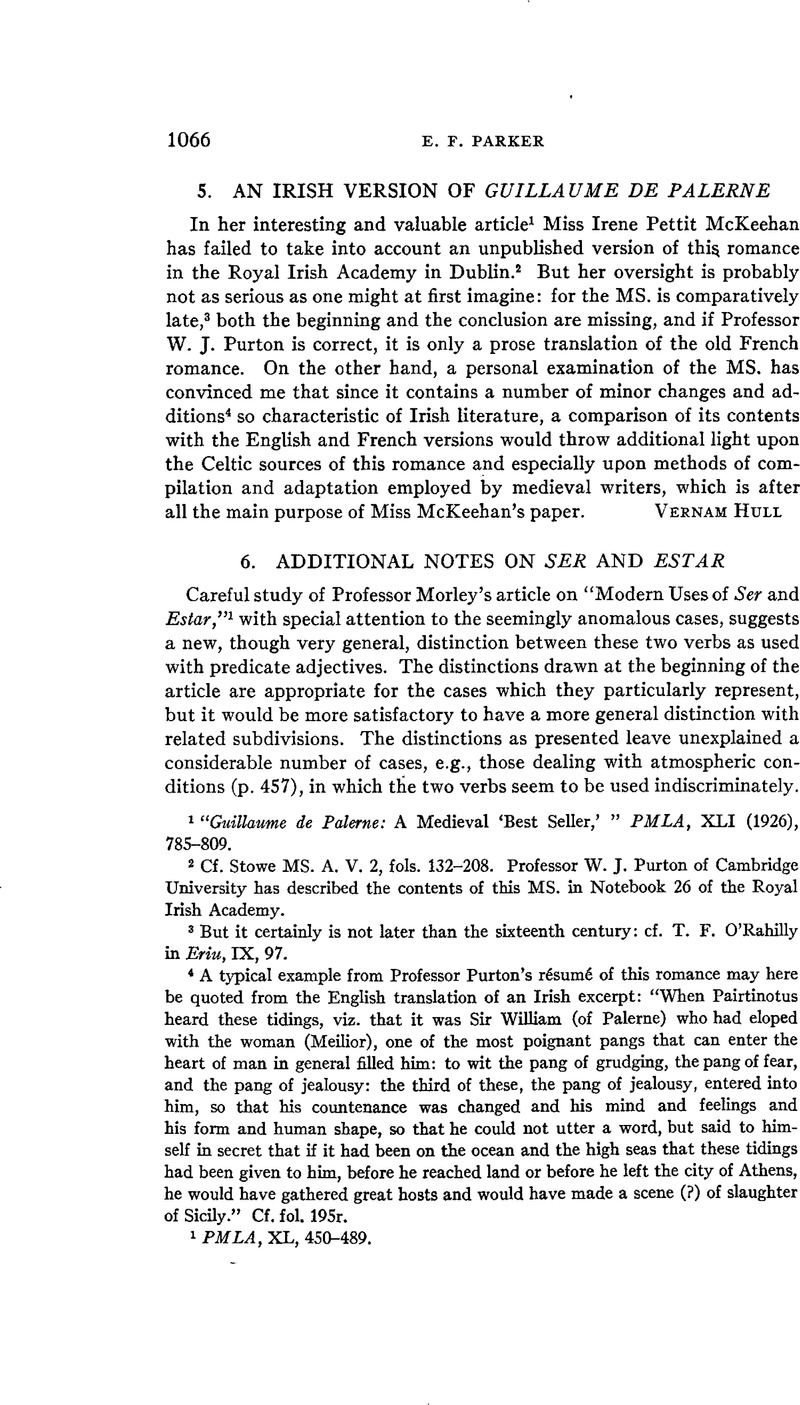No CrossRef data available.
Article contents
An Irish Version of Guillaume de Palerne
Published online by Cambridge University Press: 14 December 2021
Abstract

- Type
- Comment And Criticism
- Information
- Copyright
- Copyright © Modern Language Association of America, 1927
References
1 “Guillaume de Paterne: A Medieval ‘Best Seller,‘” PMLA, XLI (1926), 785–809.
2 Cf. Stowe MS. A. V. 2, fols. 132–208. Professor W. J. Purton of Cambridge University has described the contents of this MS. in Notebook 26 of the Royal Irish Academy.
3 But it certainly is not later than the sixteenth century: cf. T. F. O'Rahilly in Eriu, IX, 97.
4 A typical example from Professor Purton's résumé of this romance may here be quoted from the English translation of an Irish excerpt: “When Pairtinotus heard these tidings, viz. that it was Sir William (of Palerne) who had eloped with the woman (Meilior), one of the most poignant pangs that can enter the heart of man in general filled him: to wit the pang of grudging, the pang of fear, and the pang of jealousy: the third of these, the pang of jealousy, entered into him, so that his countenance was changed and his mind and feelings and his form and human shape, so that he could not utter a word, but said to himself in secret that if it had been on the ocean and the high seas that these tidings had been given to him, before he reached land or before he left the city of Athens, he would have gathered great hosts and would have made a scene (?) of slaughter of Sicily.” Cf. fol. 195r.




